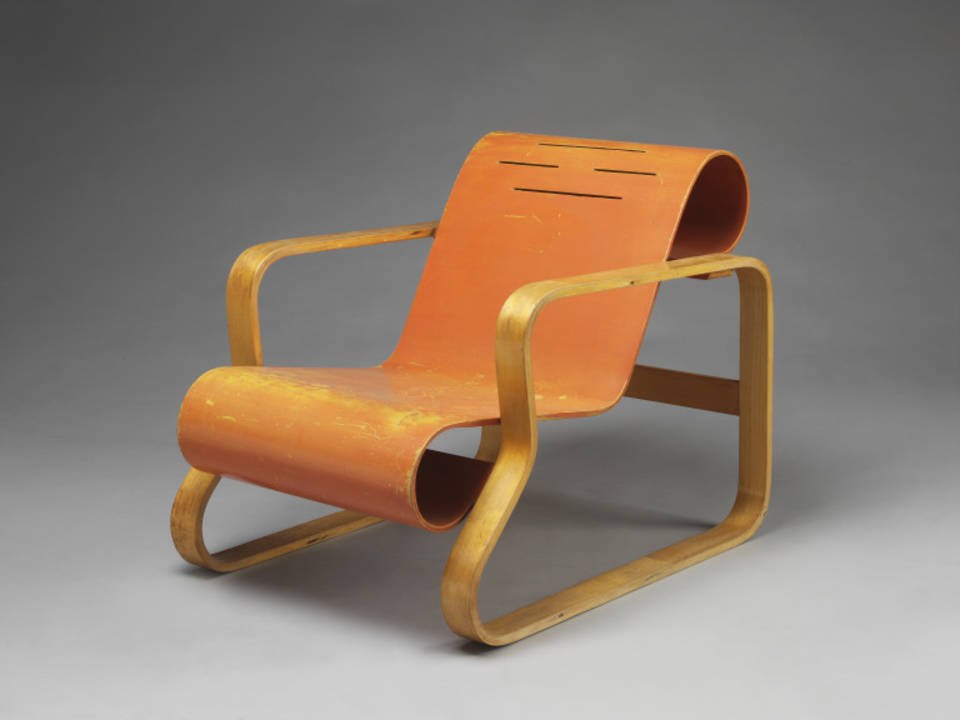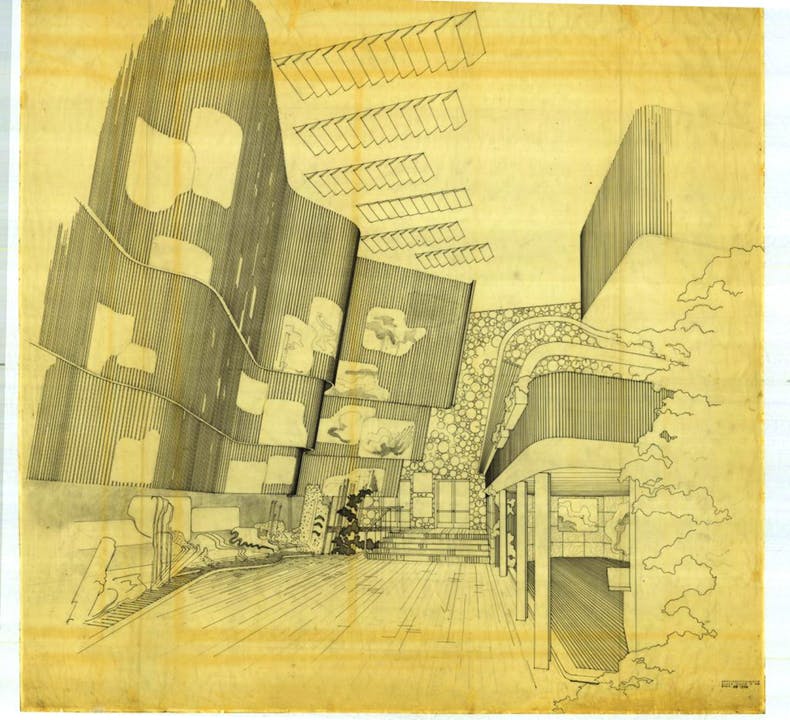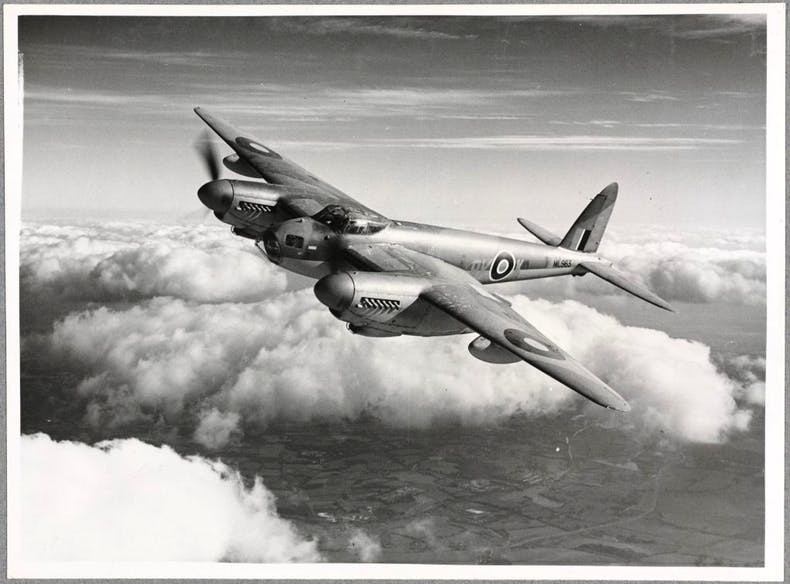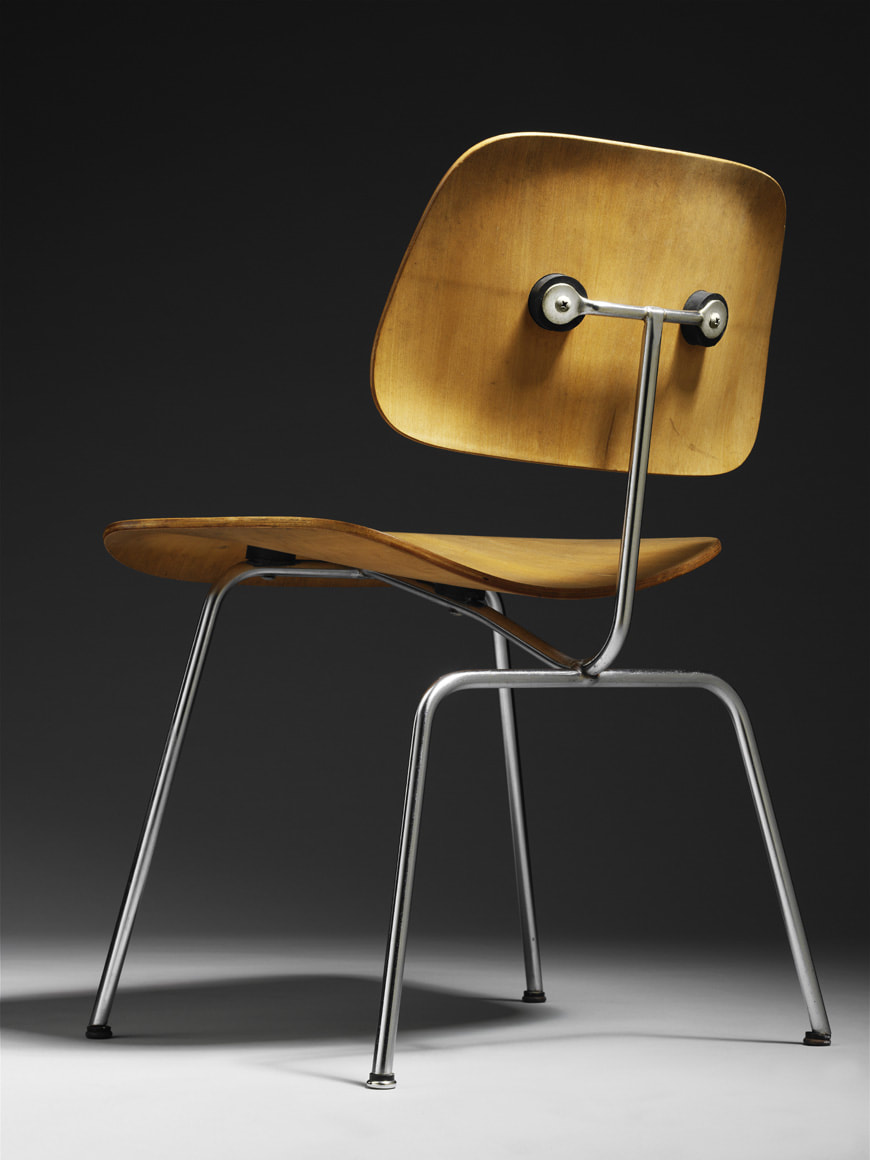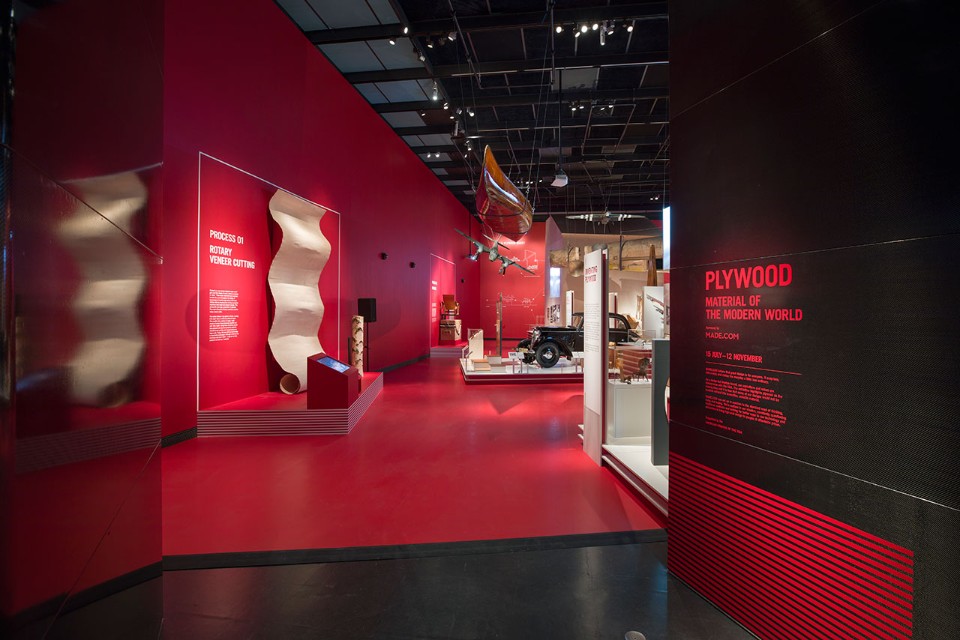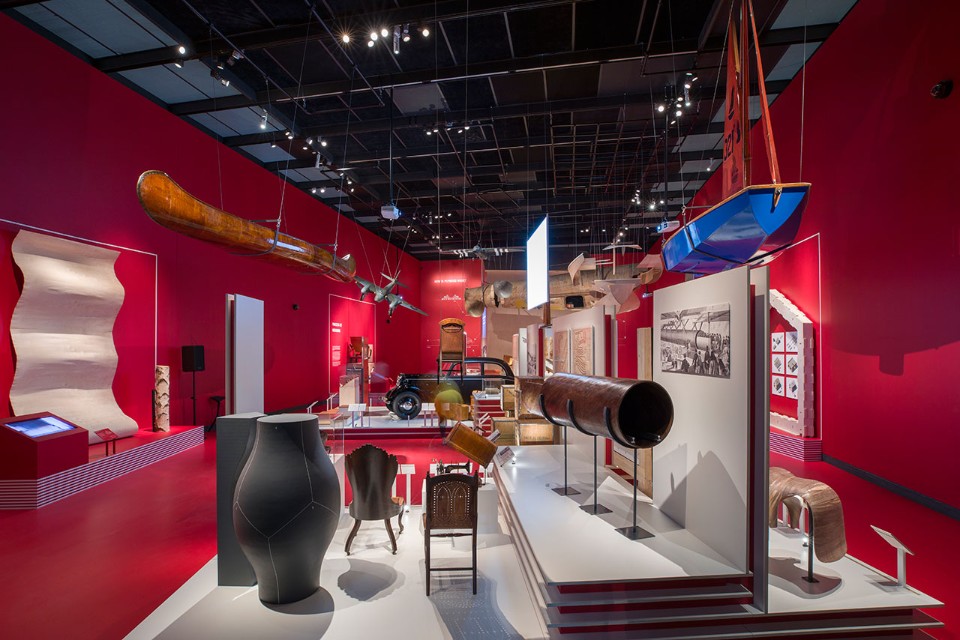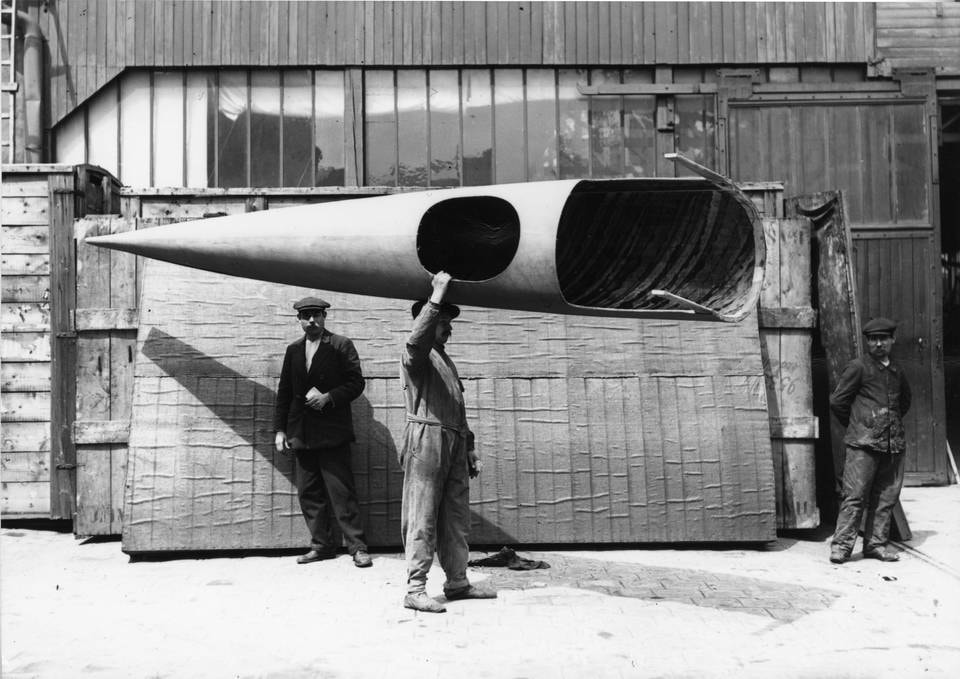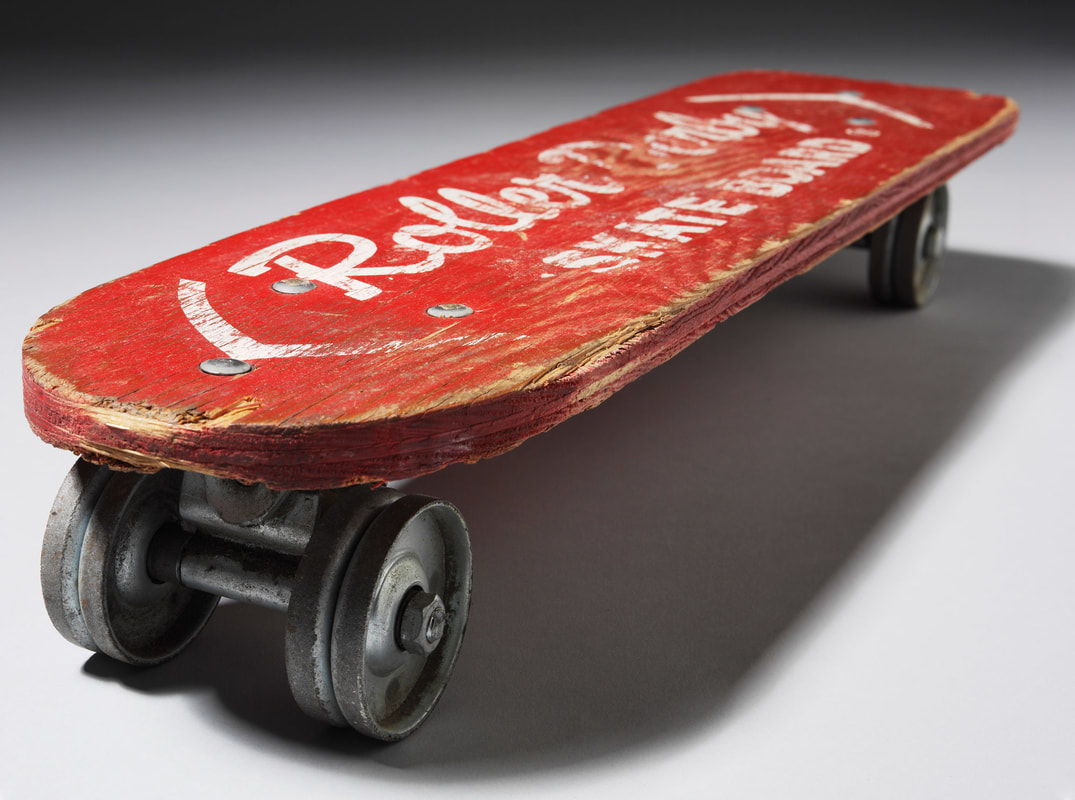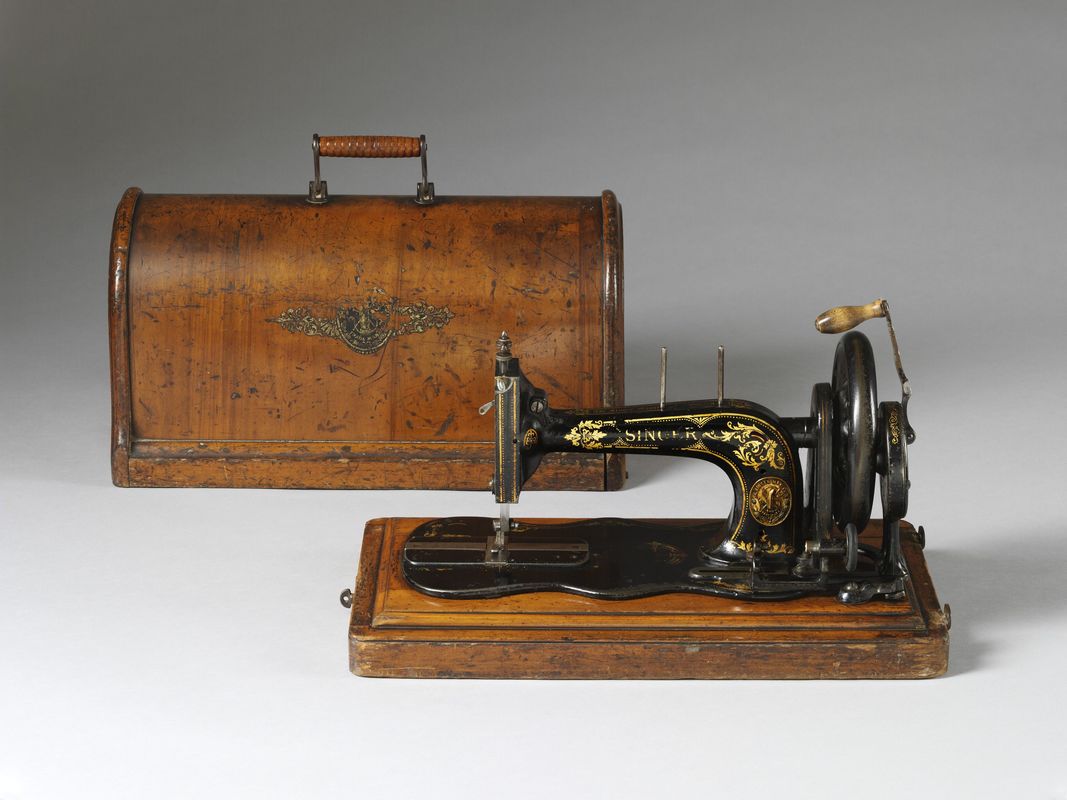Even if you don’t know that co-curator Christopher Wilk has devoted years to creating he exhibition Plywood: Material of the Modern World, you immediately sense that your visit at the V&A is an extraordinary experience. In fact, this small, jeweled exhibition can be utilized as a case study on how to create a great show in a small space, because what else can you ask for when entering an art museum? Wilk tells the curious story of this strong, stable, and flexible material made by gluing together thin sheets of wood, summarizing its fascinating biography in the most concentrated, yet effortless way. The exhibition has so many layers, that you want to grasp them all. It starts from the technology, which is demonstrated through fascinating films; to the way this technology had come to impact history, design, and culture, from the time it was rediscovered by the Victorians who perceived it as a magical material and perfect for the Industrial Age to this day. We learn that plywood was invented in ancient Egypt, that it had a key role during and after WWII in air crafts, in building defense housing, and in transporting equipment; that it was promoted in the World’s Fairs in various ways, and I loved the drawing of Alvar Aalto’s Finnish Pavilion at the 1939 New York World’s Fair which is only known from a small photo by Ezra Stoller, on loan from the Alvar Aalto Museum (below); we see the great role that it had in the culture of DIY during the postwar years; and finally, its incarnation in the digital age, when plywood has been found a great fit for digital fabricating machines and CNC cutters. And if you cannot make it to London, you can buy accompanied book by Christopher Wilk.

